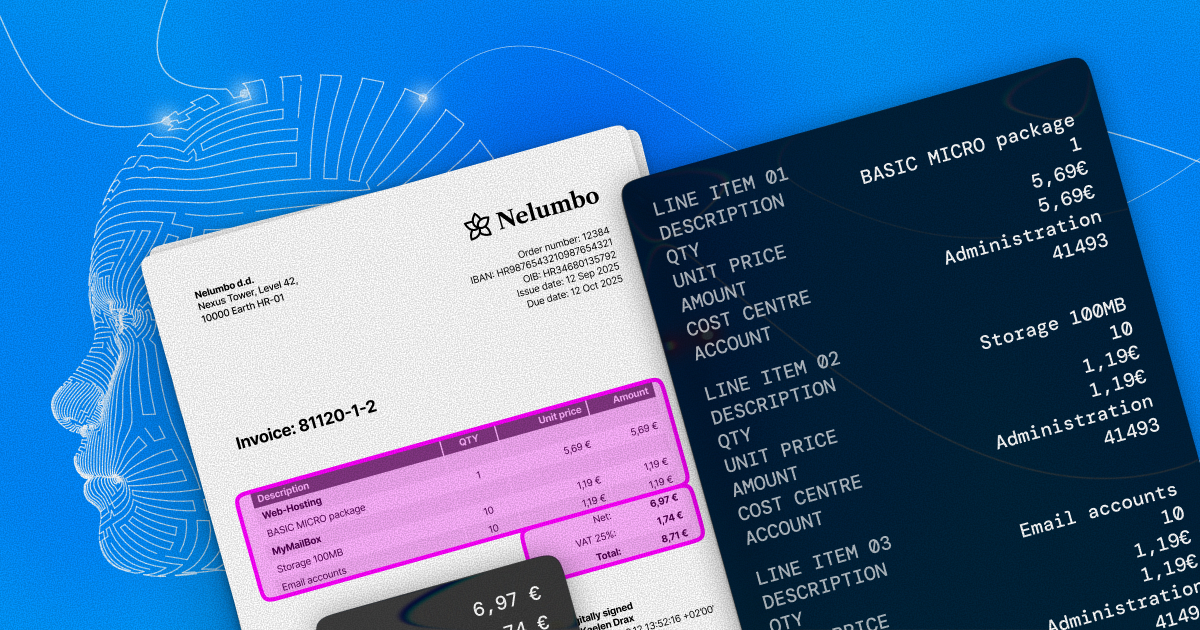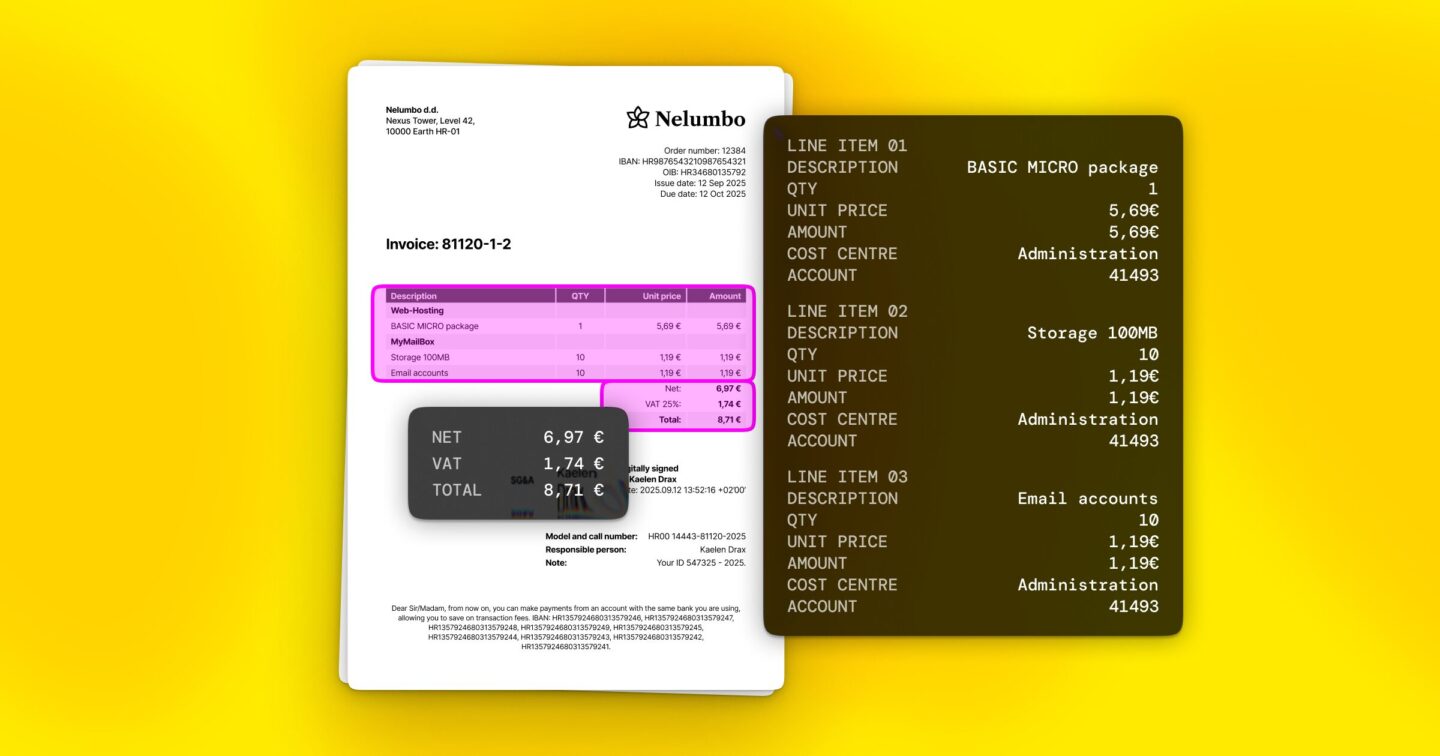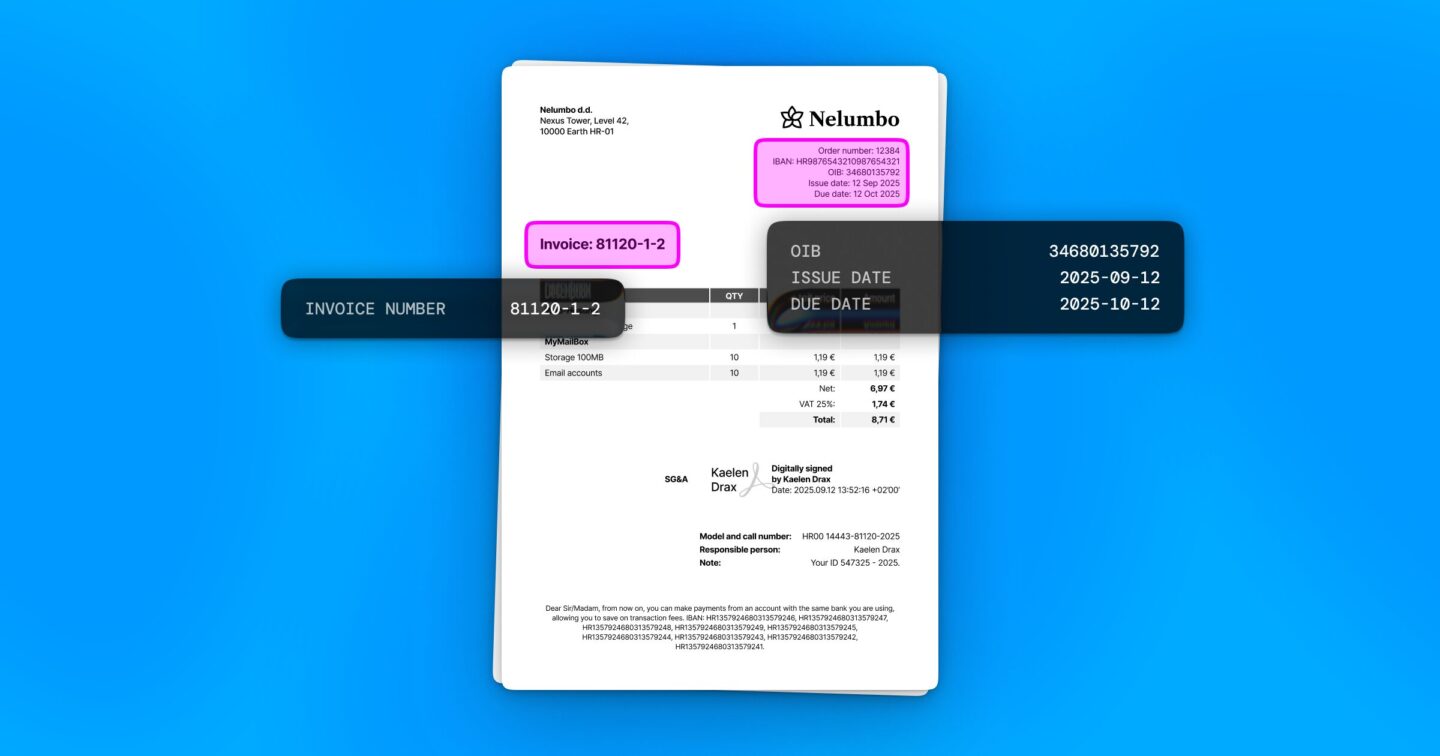September 26, 2025 - 4 min
Invoice Processing Revolution: How Machine Learning Cuts Costs and Saves Time

AI-driven automation is transforming all aspects of businesses, reducing costs, improving accuracy, and enabling scalability. In this article, find out how enterprises can adopt AI more efficiently through the example of invoice processing.
Invoice processing is a critical function for businesses, yet many enterprises still rely on manual or semi-automated workflows. These traditional methods lead to inefficiencies, errors, and scalability challenges. Digital transformation in finance is no longer optional — it’s a necessity for staying competitive.
This case study explores how an AI-powered invoice processing system was developed and implemented. The project proved that it would reduce costs and that the efficiency would improve positioning the client for future growth.
We’ll discuss key challenges, the advantages of leveraging external AI expertise, and how this technology enhances business processes without the burden of full-time hiring.

Challenges of Traditional Invoice Processing
- Manual invoice processing is time-consuming and error-prone. Even with rule-based automation, organizations struggle with inconsistencies, lack of scalability, and integration challenges.
- Human error in data entry leads to costly mistakes that require additional resources to correct. Processing times can be slow, especially when finance teams are overwhelmed with high-volume transactions.
- Many enterprises also lack in-house AI talent, making it difficult to automate workflows effectively. Existing ERP systems may be difficult to integrate with, and employees lack time or knowledge to adopt new technologies.
Addressing these pain points allows businesses to unlock significant cost savings and operational efficiencies.
The AI-Powered Solution: A Case Study
To tackle these inefficiencies, we led the development of an AI-powered invoice processing system. The goal was to prove the feasibility of automating invoice workflows using machine learning.
Early on, we did a brainstorming session with the client to see what would yield the best ROI. After careful evaluation, we determined that automating the processing of incoming invoices would provide the highest return on investment.
As Lord Kelvin famously said, “What is not measured, cannot be improved”. With that in mind, we set out to track key metrics: OCR accuracy, the precision of machine learning in attributing invoices to the correct accounts, and the extraction of critical information from diverse document formats.
One of the biggest challenges was handling the variance in document formats. However, after refining our models to reach a satisfactory accuracy level, to an innocent observer, the automation looked like nothing short of magical.
The project was completed in just one month, demonstrating how AI could quickly be deployed for real-world business impact.
The system achieved 86% accuracy based on 2,000 real invoices and effortlessly showcased its potential for reducing human effort and improving efficiency. It seamlessly integrated with the client’s existing ERP system, which further helped with smooth adoption without major infrastructure changes. Business users quickly recognised its value and pushed for production deployment, validating its success beyond a theoretical proof of concept.

Why External AI Expertise Beats Full-Time Hiring
One of the biggest obstacles to AI adoption is the lack of internal resources. Hiring full-time AI engineers is costly, risky, and time-intensive. Instead, enterprises can benefit from highly specialised external AI teams that bring deep expertise and can deliver results efficiently.
By leveraging external experts, businesses avoid the ongoing operational costs associated with maintaining an in-house AI team. These specialists also bring valuable cross-industry experience which further reduces the risk of failed implementations. The ability to scale AI projects quickly without the commitment of full-time hires means that businesses can implement solutions in a fraction of the time it would take to build an internal team. Seamless collaboration with existing IT departments ensures smooth implementation without disrupting current workflows.
There’s also something to be said about having an agency of nearly 300 experts, working across diverse industries, at your side.
Cost Savings and Future Readiness
Beyond improving invoice processing, AI adoption unlocks broader business benefits. Faster processing times enable businesses to handle more invoices with fewer resources. Reducing manual errors leads to significant cost savings and eliminates the need for additional labor to correct mistakes.
AI-powered systems are scalable, meaning they can expand to accommodate larger enterprises and international markets. Companies that adopt AI early position themselves ahead of competitors by leveraging automation to improve financial operations. Future-proofing with AI ensures that businesses remain adaptable to evolving industry demands and emerging technologies.
Key Takeaways
This case study highlights how AI-driven invoice processing transforms financial operations. The PoC demonstrated tangible value, leading to immediate user adoption. Enterprises looking to modernize should consider external AI experts for faster, cost-effective solutions that integrate seamlessly with existing systems.
Benefits for the business:
- Significant reduction in manual processing errors
- Faster invoice processing, improving financial operations
- Lower operational costs and higher scalability
- Seamless integration with existing ERP systems
Our success:
- Demonstrated AI expertise through a high-impact PoC
- Achieved 86% accuracy in a short timeframe, proving feasibility
- Built trust with stakeholders, leading to long-term opportunities
- Positioned for expansion into larger markets with scalable AI solutions
Ready to explore AI-driven transformation? Contact us to discover how we can help your enterprise leverage AI for greater efficiency and growth!
Give Kudos by sharing the post!






